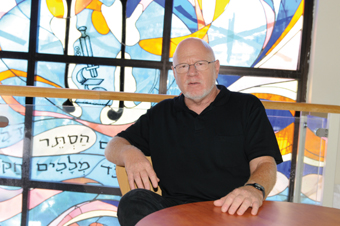The discovery may help in the development of a reliable method for diagnosing autism at a young age

The biological causes of autism are still not understood, therefore a definite diagnosis of the syndrome is possible only at the age of three to four years, with the appearance of behavioral symptoms, through a subjective behavioral test. A study by scientists from the Weizmann Institute of Science and the Autism Research Center of the University of California in San Diego offers for the first time a reliable and accurate biological index for diagnosing autism in toddlers, already at a very early age. In functional magnetic resonance imaging (fMRI) of sleeping toddlers aged one to four years, the scientists discovered low synchronization in the activity of the two brain lobes in the autistic toddlers - compared to a high level of synchronization in healthy toddlers - in brain areas related to language and communication.
"Understanding the biological indicators that characterize autistic children is an important goal for scientists around the world, because it may provide a tool for diagnosing the syndrome at a young age, as well as provide scientists with a tip in their attempts to understand the causes of the disease and how it develops," says postdoctoral researcher Dr. Ilan Dinstein, from Prof. Rafi Malach's group in the Department of Neurobiology at the Weizmann Institute of Science, who headed the research team. Poor communication between nerve cells in different areas of the brain is one of the hypotheses put forward as a cause of autism-related symptoms, but so far no way has been found to test it in babies - because measuring toddlers' brain activity using an fMRI scan is complicated to perform. An opening to solving the problem was created thanks to the research carried out by Prof. Rafi Malach's group - and other research groups in the world - because even during sleep, the brain does not sleep. The brain cells continue to work even when resting and go through a kind of oscillations of electrical activity that occur in parallel in the two lobes of the brain - the right and the left - as if in a mirror image.
Scanning the brain activity of autistic toddlers showed a low level of this synchronized brain activity in brain areas known to be involved in language and communication, compared to toddlers with normal development, as well as compared to toddlers suffering from a delay in language development that is not related to autism.
In addition, a correlation was found between the strength of synchronization and abilities in the field of language and communication: the lower the synchronized activity, the more severe the signs of autism. Conversely, a high level of synchronized brain activity was seen in toddlers with high verbal abilities. In this way, the researchers were able to identify 70% of the toddlers with autism already between the ages of one and three. The research findings were published in the journal Neuron.
Dr. Dinstein: "We discovered a possible biological index for diagnosing autistic babies, at a point of development where the first signs are just beginning to appear. The ambition is that in the coming years several additional indicators will be discovered, the combination of which will enable an objective and accurate diagnosis of the syndrome."

3 תגובות
I agree with my father. What's more, the substances that were suspected to be dangerous in baby vaccines have long been taken out of use (over 6 and a half years at least in Israel).
It shows how brainwashing can kill people. Do you have any idea how many children died from whooping cough, measles and rubella and other childhood diseases that a vaccine could have prevented just because of science ignoramuses spreading lies?
http://www.youtube.com/watch?v=VJbc9Xw3yHc
The research linking vaccines to autism was not just sloppy, it was deliberately falsified
Is it possible to hide in a herd?
We know very well what is the source of the very sharp increase in autism.
The vaccine-autism connection is already a scientific and legal fact.
Peer review research reveals:
83 families received compensation quietly from the administration in US courts,
Due to the vaccine damage that caused their children autism.
http://digitalcommons.pace.edu/pelr/vol28/iss2/6/